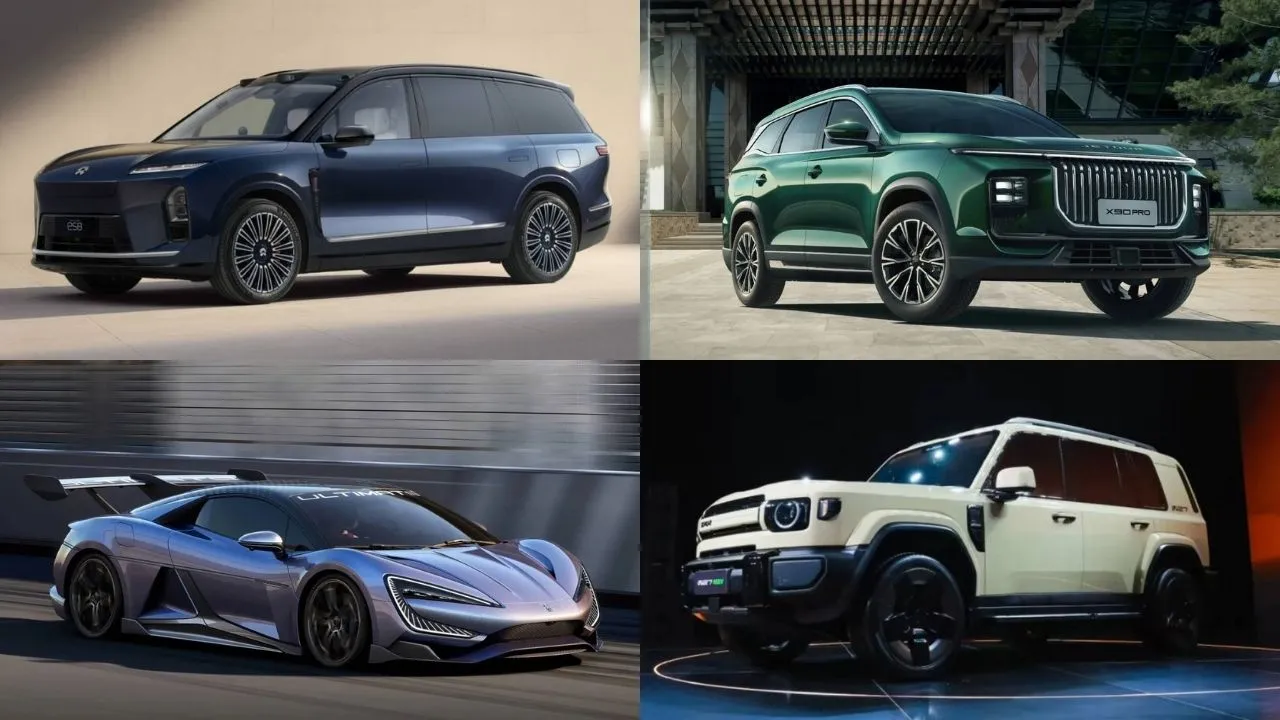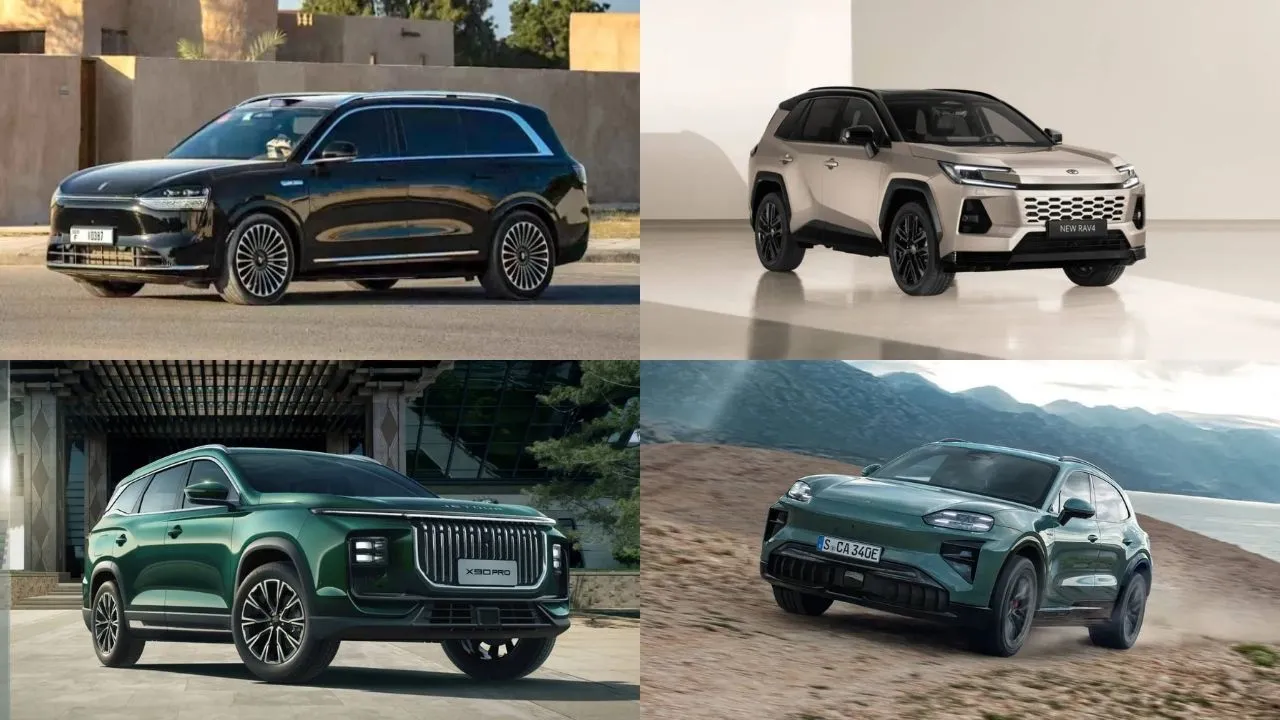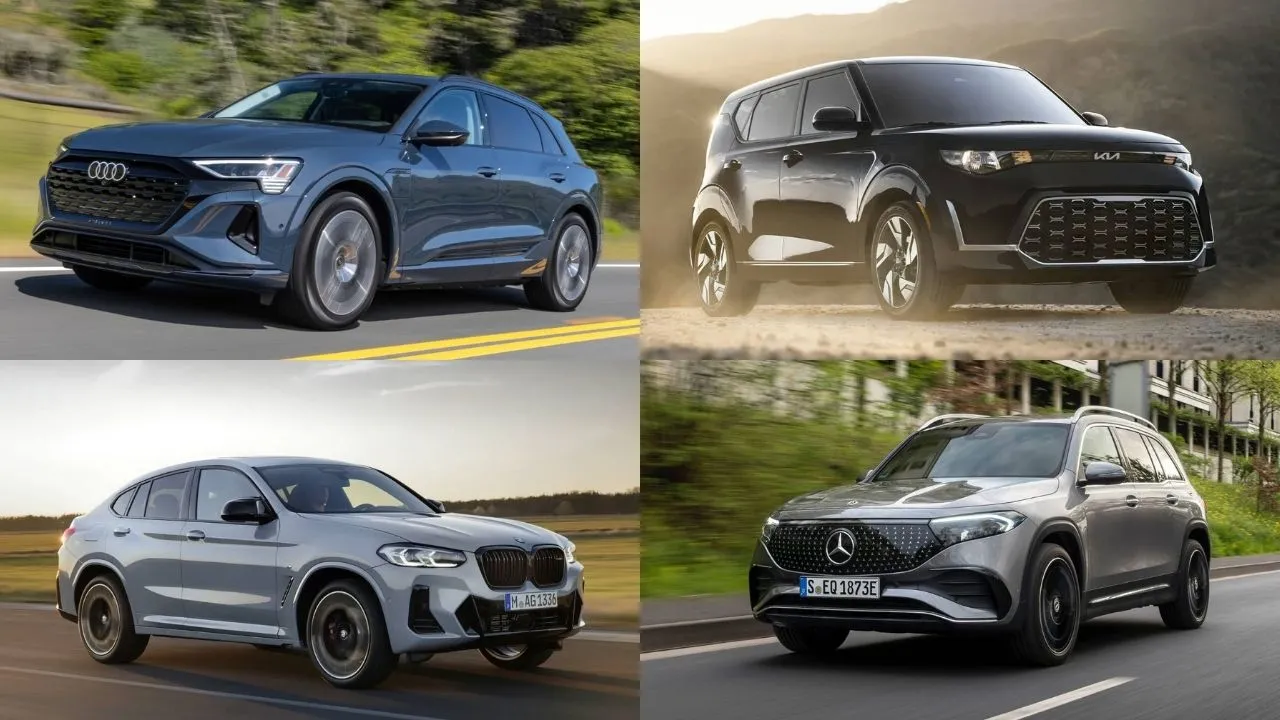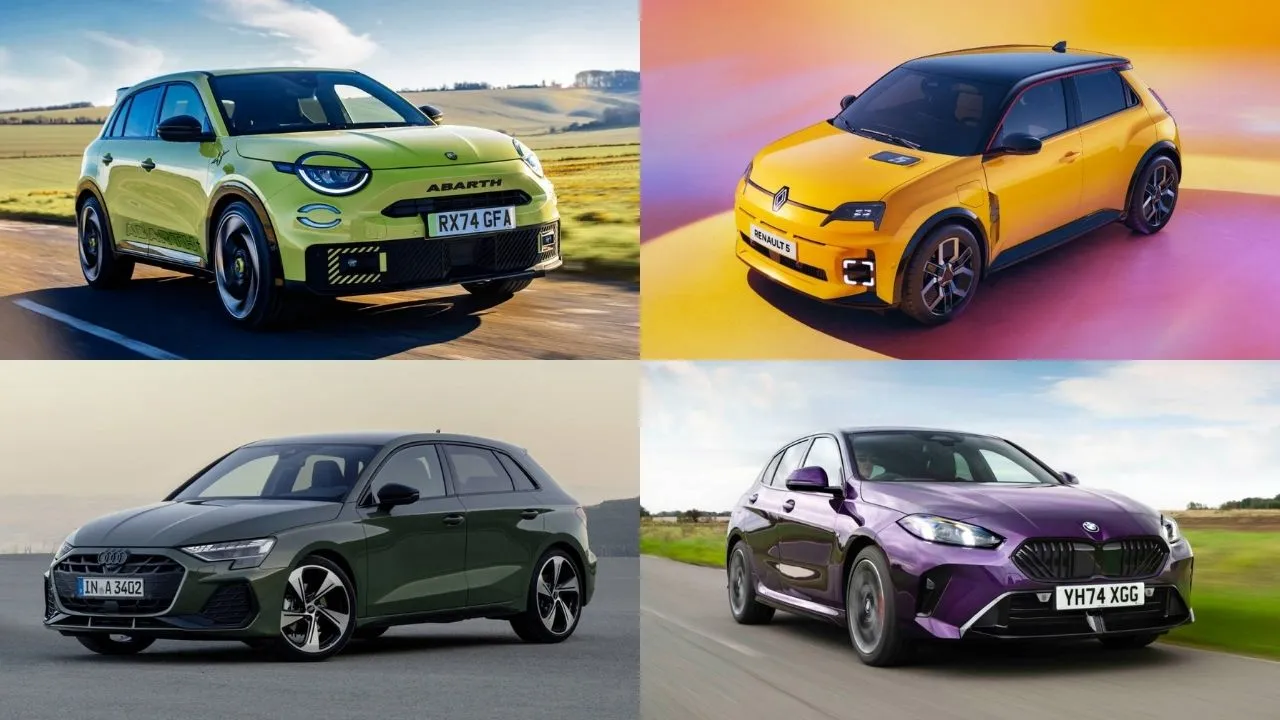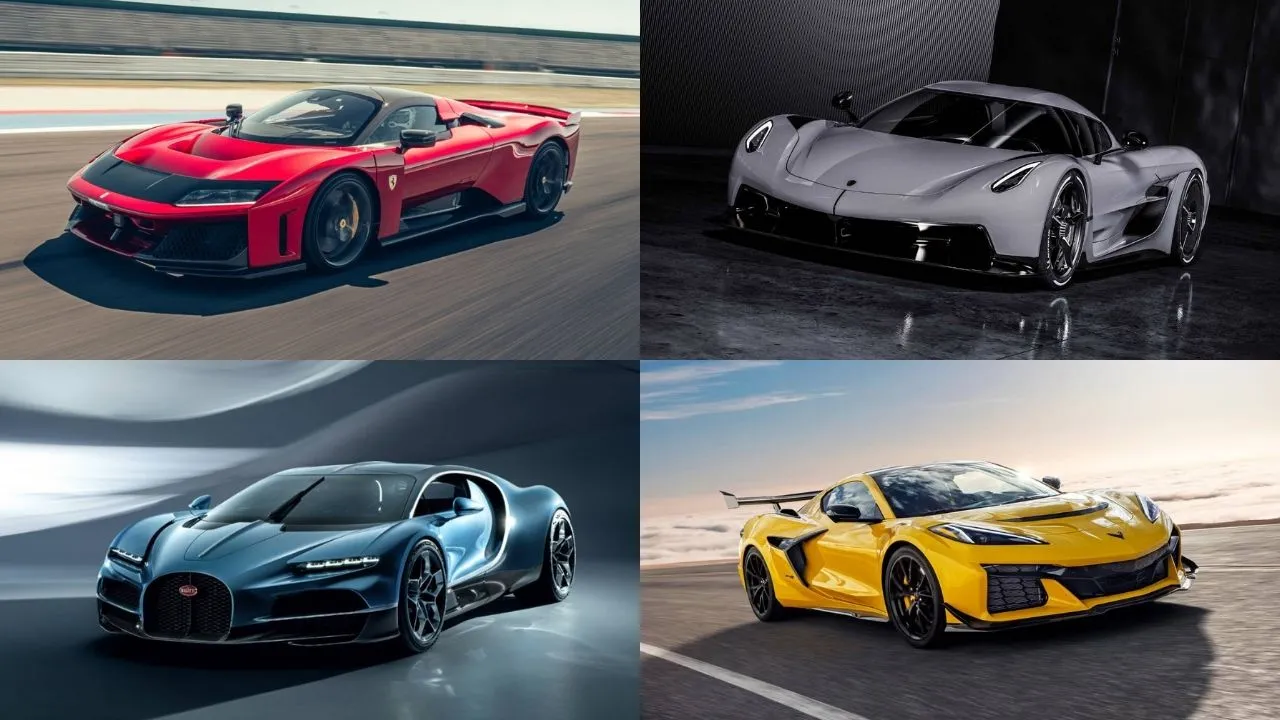BMW X5 & X5 M History: Generations & Models Of The Dynamic High-Performance SUV

The BMW X5 mid-size luxury SUV has been one of the brand’s best-selling cars since it was launched in 1996. The BMW X5 is among the best SUVs in the world, known for its stellar handling, excellent performance, impressive luxury, and versatility. As the first-ever SUV produced by BMW, the X5 marked a pivotal point in BMW’s growth trajectory.
BMW currently produces four electric SUVs and eight petrol-powered SUVs, and all of these SUVs owe their existence to the first generation of the BMW X5. BMW also developed the X5 M, a hardcore high-performance SUV, based on the second-generation X5. In this DubiCars Car Spotlight article, we take a look at the history, generations, and models of the BMW X5.
Origins Of The BMW X5
In the 1990s, BMW recognized the growing demand for SUVs, particularly in the American market. To meet this demand, BMW decided to develop a vehicle that combined the robust nature and practicality of an SUV with the performance and driving experience characteristic of BMW’s sedans.
In 1994, BMW acquired the Land Rover marque and therefore had access to the design and engineering of the Range Rover. The Range Rover was the best SUV in the world at the time, with a capable 4WD drivetrain and a luxurious cabin. Read all about the history and generations of the Range Rover here.

This acquisition further bolstered the development of the brand’s first SUV. it eventually led to the creation of the BMW X5. The company marketed it as a ‘Sports Activity Vehicle’ (SAV) to emphasize its on-road prowess and dynamic capabilities.
First Generation BMW X5 (E53) | 1999 – 2006
The first-generation BMW X5, internally designated as the E53, was introduced in 1999. It marked BMW’s entry into the SUV market and set new standards for luxury and performance in this segment. As aforementioned, it drew inspiration from the Range Rover and used technology and parts from the British SUV.

However, since the beginning, BMW remained very clear about positioning the X5 as a more dynamic and sporty on-road SUV. Hence the E53 X5 was built on a unibody chassis, a departure from the body-on-frame construction typical of traditional SUVs.
The SUV also came equipped with BMW’s xDrive all-wheel-drive system and yet featured a rear bias to make sure it drove like a BMW. Petrol engine options included a 3.0-litre inline-6 and a 4.4-litre V8. A 3.0-litre inline-6 unit powered diesel models.
Second Generation BMW X5 (E70) | 2006 – 2013
In 2006, BMW launched the second-generation X5, codenamed E70. Building on the success of its predecessor, the E70 featured an all-new design, advanced tech, impressive performance, and safety. The new model was larger, offering more interior space and optional third-row seats, making it more family-friendly.

The same engine options were available with the addition of a 4.8-litre V8. However, the older engines were revamped to be more efficient. The all-wheel-drive system was further refined, and the vehicle’s handling was enhanced with features like Adaptive Drive and Active Steering. The E70 also saw the introduction of BMW’s EfficientDynamics technology, which aimed to reduce fuel consumption and emissions.
BMW X5 M
Introduced at the 2009 New York Auto Show, the BMW X5 M is the high-performance version of the X5. At the time of its launch, it was the most powerful SUV in its segment, drawing power from a twin-turbocharged 4.4-litre V8 engine, producing 547hp and 680Nm.

These were insane numbers for an SUV. In addition to the powerful engine, it featured the largest brakes and advanced suspension for impressive performance even on a racetrack. It was quicker than the Porsche Cayenne Turbo S, Range Rover Sport Supercharged, and Jeep Grand Cherokee SRT-8.
Third Generation BMW X5 (F15) | 2013 – 2018
The third-generation BMW X5, designated as the F15, was introduced in 2013. The F15 represented a significant evolution in design, technology, and performance. It featured a more aggressive and modern exterior design, with sharper lines and a larger kidney grille. Many believe it is the best-looking generation of the X5 so far.

It offered a range of powerful and efficient engines. Keeping in line with environment-friendly industry standards, The BMW X5 was for the first time, offered with inline-4 engine options. 2.0-litre inline-4 and 3.0-litre inline-6 petrol & diesel engine options powered the BMW X5. The F15 also featured an improved xDrive all-wheel-drive system. It also became the first BMW car to be offered with a plug-in hybrid drivetrain.
BMW X5 M (F85)
The M version of the third-generation BMW X5 was codenamed F85 and released in 2015. Powered by a turbo-petrol 4.4-litre V8 engine producing 567hp and 750Nm, the X5 M outperformed most performance cars. It was at the time, the most powerful engine BMW placed in the engine bay of a production car. The X5 M clocked the 0-100km/h run in just 4.2 seconds.
Fourth Generation (G05) | 2018 – Present
The fourth-generation BMW X5, codenamed G05 debuted in 2018. This generation brought a new level of sophistication, performance, and innovation to the BMW X5. The current-gen BMW X5 features an all-new design language, with a bolder and more muscular exterior, even larger kidney grilles, and sleek LED lighting.

It offers a range of engines, including turbocharged inline-4 and inline-6 petrol and diesel options. The plug-in hybrid variant uses a 3.0-litre inline-6. BMW further refined its xDrive system and the SUV features a new air suspension system.
BMW X5 M (F95)
The current-gen BMW X5 M is codenamed F95 and is among the most aggressive SUVs of all time. BMW went one step ahead and launched the X5 M Competition, an even more hardcore version of the X5 M. A 4.4-litre twin-turbo V8 powers both models however, they differ in output. The BMW X5 M gets 597hp and the BMW X5 M Competition produces 616hp! It accelerates from 0-100km/h in just 3.8 seconds.
Most Popular BMW X5 Generations In The UAE
The third and fourth generations of the BMW X5 are the most popular generations of the SUV in the UAE. A combination of great handling, modern features, and sports car-like performance makes these SUVs popular not just in the UAE but across the Middle East.
BMW X5 Prices In The UAE
Prices for a new BMW X5 for sale in the UAE range from AED 138,000 to AED 205,000. Prices for a used BMW X5 for sale in the UAE range from AED 49,000 to AED 185,000 depending on the model, year of manufacture, and condition.
Subscribe to DubiCars’ WhatsApp Channel for the latest automotive news, guides, polls, and informative infographics.
Stay tuned to UAE’s most popular auto blog for more content on cars and their generations.
Also Read:
– Guide To Automatic Gearbox Problems: Causes & Fixes
– Land Rover Defender: History, Generations & Models


